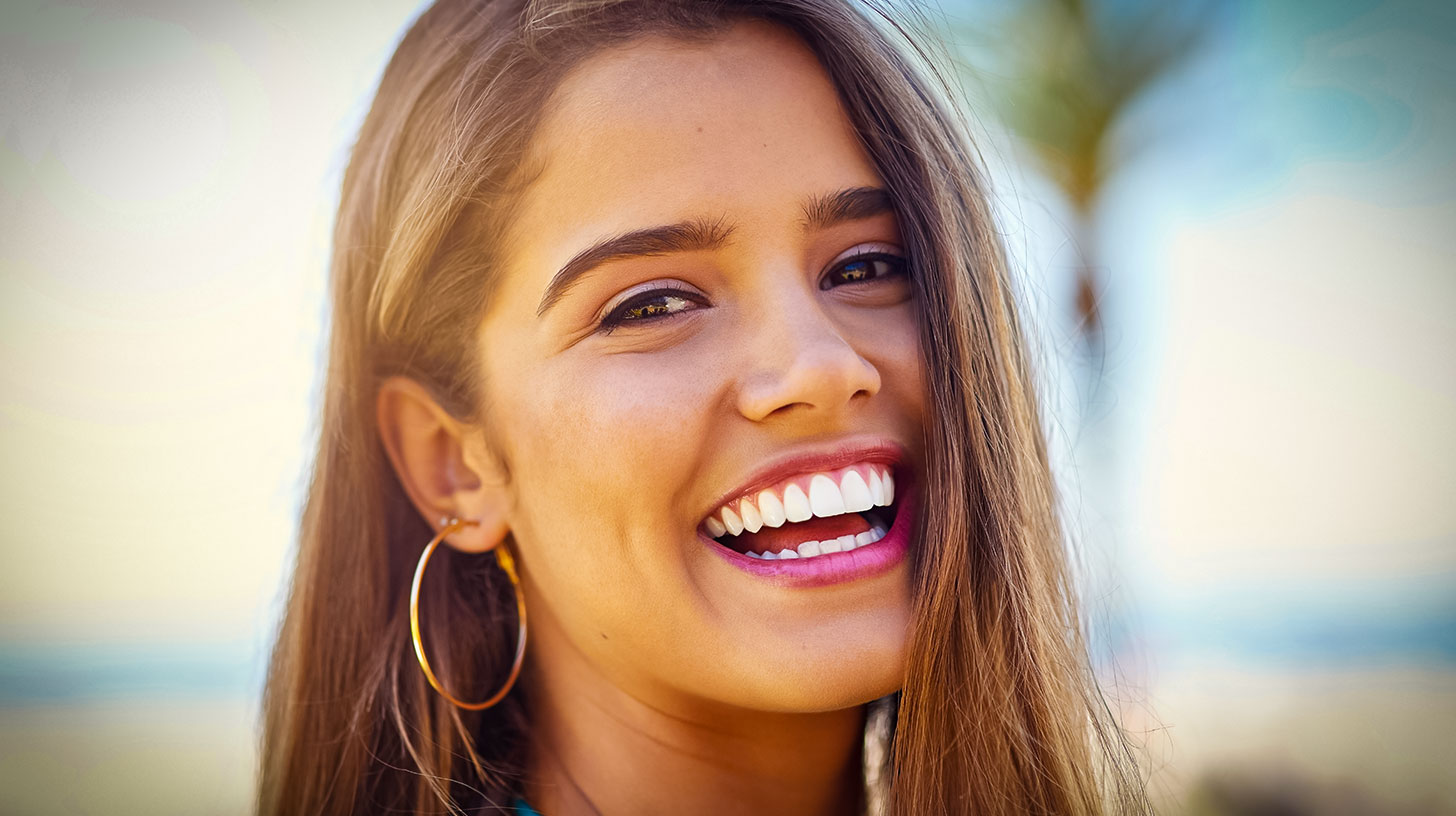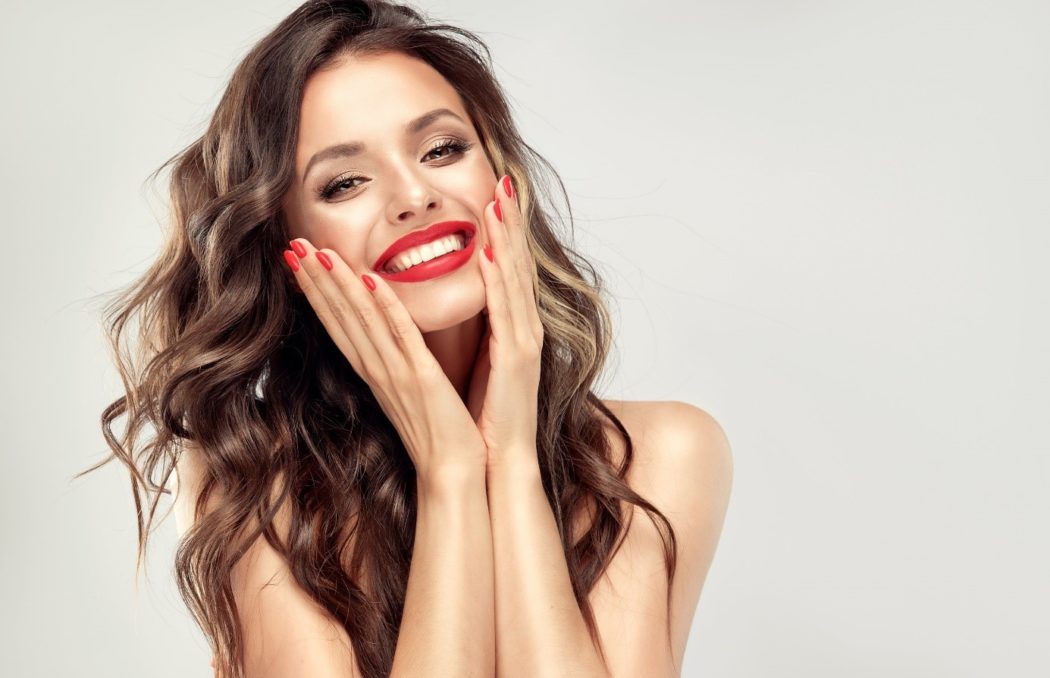
Smiling people are nice to look at and the mouth area in photos immediately attracts viewers’ attention. However, if you are partaking in a posed photo session, keeping your smile natural can be challenging.
Anyway, difficult doesn’t mean impossible. In this guide, you will find clear tips on how to get a good smile for pictures, so wait no longer and start practicing.
Many of us devote lots of time to exercising in order to get an athletic body and the same approach works perfectly when it comes to improving a smile. By working out the main facial muscles, you can better control your lips, which inevitably affects a smile. Thus, you will feel more confident during the shooting and can fully immerse yourself in the process instead of thinking about how your smile looks.
The most popular exercise is called The Wide Smile. As the name suggests, using this approach, you can make your smile wider over time. The main thing here is to smile as widely as you can and hold such a position of lips for at least 15 seconds. Repeat it 10 times in a row. If you train every day, you will soon see the result.

Models, celebrities, or simply people who like being photographed, claim that regular training works wonders for their ability to smile naturally in photos. They also highlight that they keep practicing every time they can.
They always use a mirror to figure out whether everything is OK with how they are smiling. If yes, they take notes concerning their feelings in facial muscles in order to repeat them when needed. Besides, they concentrate on the process, as conscious training is the core of success. Sometimes, you may smile too hard for a picture. If you notice this in photos, just spend several minutes to ease a grin.

Stress and tension accumulated in your body are immediately revealed when you smile. Of course, such a grimace will hardly look great in images, so you need to learn how to quell your negative feelings and release mental and emotional strain. Your smile is mainly controlled by the zygomaticus major, which sits between the corners of human lips and the upper part of the cheeks.
When you are uptight, no matter how diligently you try to smile naturally in photos. Your muscles will be noticeable taut around the sides of your face. Thus, you will end up looking sad or even dissatisfied in pictures.

This is a win-win method for anybody learning how to smile for pictures. Joyous memories from the past can instantly improve our mood, which has a direct impact on our facial features. Recollect your last trip to the seaside, family holiday, or anything that warms your heart. Being in high spirits, you can bring to life any portrait photo idea.
You can even flick through shots on your phone to remember something really amusing. Photos of pets work perfectly in this case. Besides, you can incite laughing in order to feel the vibe and start smiling broadly. A person taking images can tell a joke or make a funny face, and your reaction won’t take long to appear.

Practicing portrait photography, it is important to remember that different emotions usually engage several groups of muscles. For instance, if you want to show your good mood, it isn’t enough to smile – you need to ensure there is no disbalance between your mouth and your eyes, as the latter are also capable of displaying your real emotional state. So, you need to learn the Duchenne smile when both eyes and lips are smiling.
Practice at a convenient pace and always use a mirror to monitor the progress. The truth is your smile will hardly look genuine if your eyes reflect sadness.

Sometimes a short message, news, or simply changeable weather can upset us right before a photo session, which has an inevitable effect on how we smile. If you feel that something goes wrong and you can’t be smiley, take a deep breath and exhale the air slowly. Such a simple action will help your body get rid of tension, so repeat it several times till you feel better.
After several such cycles of deep breathing, you will become more relaxed. Your attention will be shifted from upsetting factors to more comforting ones.

Few people really look cool in full-face photos. Your facial features become flat and the appearance is slightly distorted. Instead, you should show the structure of your face by turning your head slightly to the side. If you have a so-called "better side" that highlights your advantages, turn it to the camera.
Turning your head, you can achieve a more interesting look in pictures, but don’t get too carried away with extreme angles. Always focus on naturalness. If possible, stand slightly below a camera so that a photographer captures you slightly from above.

People learning how to smile for a headshot often make the same mistake – they open their mouths too widely. However, it isn’t necessary to show all the teeth in a photo. If you open your mouth a little, your face will become more pleasant. It is better to show several upper teeth than to try to demonstrate all 32 teeth.
If you prefer to smile with your mouth closed, it is OK. However, you will look more serious than people showing some teeth. In case you want to slightly improve lip curves or teeth colors in images, make use of a smile editor app.

People saying “cheese” during photoshoots is a pet peeve for seasoned photographers, who know what a terrible grin appears on faces at this moment. I feel a bit irritated when I hear about the smile-evoking capabilities of this word and always recommend my clients to say “money” instead. The word “money” not only triggers some nice feelings but also results in a natural smile.

When you close your eyes before a photographer snaps a shot, you actually prevent squinting, which is a frequent problem during the shooting. You need to do it several seconds before an image is taken and open the eyes slowly unless you are after an astonished look. While opening your eyes, make sure to smile gently for an absolutely adorable photo.

If you are thinking about your appearance all the time, focusing on something you don’t like, no wonder, your negative emotions and dissatisfactions will be noticeable in images. You will look tense and strained instead of lighting up with happiness.
The next time you will be photographed, forget about saying "cheese", and head to your "happy place." Don’t think about how your face looks, but recollects special moments with your nearest and dearest, and a candid smile will immediately appear on your face.

How to get a good smile for pictures? Make sure you choose proper accessories, with lipstick being at the top of the list. By selecting a proper lipstick color, you can make your teeth look like pearls. Certain shades of lipstick hide the yellowness of teeth and help them look whiter. You can improve your smile by applying the lipsticks described below before a photo session:
Rich berry shades. They contrast with the color of the teeth and make them whiter.
Colors with blue tints. They hide the yellowness of the teeth.
Stay away from yellows and oranges, as they will only accentuate a yellowish tint of your teeth and make your smile dull.

If the skin on your lips is dry and peels off, you may feel uncomfortable, which is impossible to hide while posing in front of the camera. I recommend you use a facial scrub to exfoliate the skin of your lips, then apply a lip balm to hydrate them, and repeat these steps on a regular basis. When it's time to smile, you won't be shy.

Foundation, blush and bronzer are indispensable if you want to make your smile stand out and immediately attract viewers’ attention. Choose shades that suit your skin tone well. Your teeth will look whiter if you opt for darker makeup. Besides, this way you can mimic tan.

If you need to intensify your smile (let's call it this way), ask someone to tell you a joke. Or take a short break and watch a couple of funny videos on the net. Thus, you will smile naturally in photos or even laugh sincerely.

When the shooting is over and you procced with photo editing, these high-quality actions may come in handy. Using them, you can ditch skin defects, correct colors, add hair volume, brighten eyes, improve lips and teeth, apply stylistic effects, and more. The range of filters is huge, so you will find actions suitable for enhancing studio & outdoor, family, senior, and children portraits.